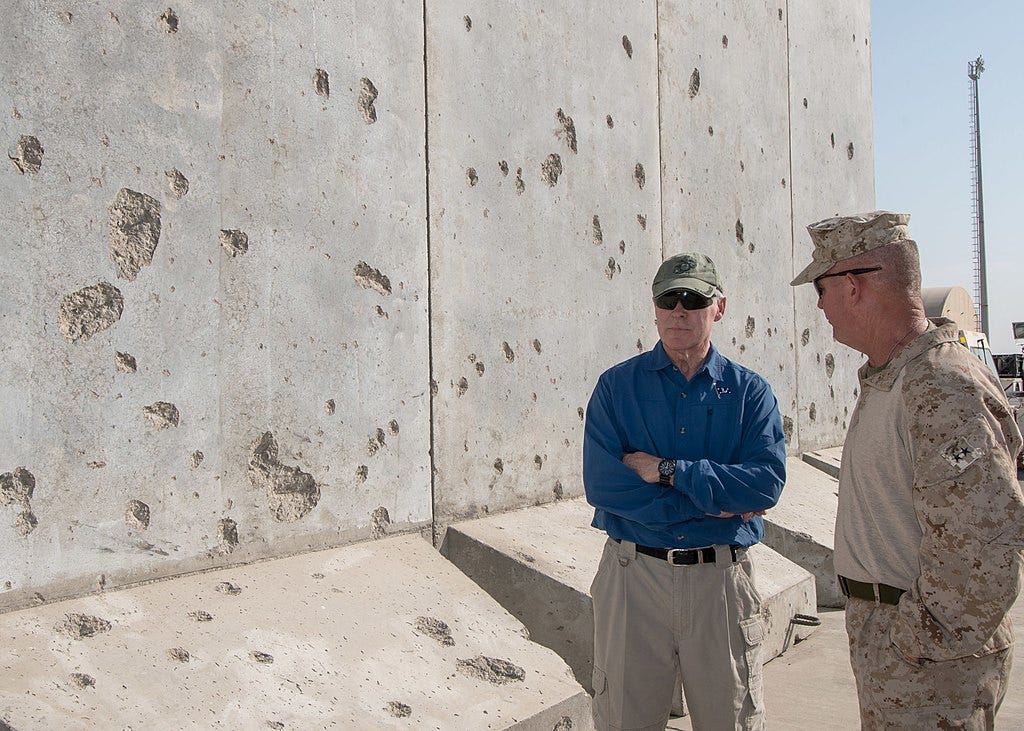Concrete in Gaza
Israel has launched its ground assault in Gaza. After several days of airstrikes, IDF soldiers are engaged in direct combat. This morning, Israeli authorities announced that 15 had been killed.
As many, many writers have noted, this won't be an easy task. The difficulty lies in more than just the existence of Hamas' tunnels.
In war in general, defense has an advantage over offense. It has long been accepted that there is some ratio, commonly cited as 3:1, of the number of soldiers on offense vs defense for the offense to prevail.
But this simple ratio is greatly affected by the terrain. In general, terrain that offers more cover favors the defense. On a wide-open field, the offense has an easier time of it; in jungle or mountains, the defense has more places to hide, shoot, and lay traps.
Urban warfare gives the defense an even greater advantage. Hitler's superior divisions could not crack Stalingrad. Neither side in the Russia/Ukraine war can make much headway against the other in Ukraine's villages and towns. Tanks traveling down narrow streets are easily destroyed with shoulder-fired weapons. Like the Greeks against the Persians at Thermopylae, a narrow passage can be held by a very small force.
From a military perspective, the battle of the IDF vs. Hamas looks more like a large, well-organized force against a small insurgency. Hamas is not an insurgency, but it can use the same tactics. Insurgencies can and do win, sometimes, particularly when the insurgents can blend with the population, and use external pressure to sap the larger force's will to fight.
There are some well-established tactics that can defeat such an enemy insurgency. In the Malayan guerilla war (1948-60), the British successfully defeated the insurgents with a scorched earth policy. They systematically eliminated the sources of food for the population, forcing everyone, including enemy fighters, out into the open.
More recently, the U.S. largely defeated the opposition in Iraq by restricting movement within Baghdad. Their most effective weapon was concrete, laying barriers high and low throughout the city, forcing civilians and terrorists through checkpoints. Similarly, American troops erected a concrete wall around Fallujah, preventing the enemy from leaving the city.
The IDF can use both of these tactics in Gaza. It has already sealed Gaza from the outside world, and cut off food, water, and electricity. It can move to the next stage and start installing concrete walls to break Gaza into pieces.
It can lay a wall across the middle of Gaza, separating north from south. Civilians have already been asked to move south. The wall can have gates, where civilians who wish to escape can do so, after they have been searched for weapons. Men of military age can be detained and questioned, and it may be possible to identify Hamas members attempting to leave.
Israel can wall off parts of Gaza a piece at a time, restricting the ability of Hamas to coordinate and share resources.
It would defeat the purpose of the walls, of course, if there are tunnels beneath; but Israel claims to know where most of the tunnels are, and it has invested heavily in tunnel detection. If Israel can destroy tunnels from above along the narrow line of each wall, the walls will be effective.
There might not even be a need to flood the tunnels, though that would hasten the process of forcing Hamas into the open.
If Israel adopts a concrete tactic, it can more easily separate terrorist from civilian, avoid the humanitarian costs of continuous bombing, avoid IDF soldier deaths, and never need to enter the tunnels until the last of the terrorists has given up or died.
Civilians who pass through checkpoints to safe areas can receive food and supplies. Hamas fighters who stay hidden and restricted to areas that the IDF hasn’t yet cleared will starve.
The prospect of inevitable starvation tends to focus the mind, and may lead the less committed of the terrorists to give up hostages in exchange for food. Vladimir Lenin said that "every society is three meals away from chaos", and if there is anything likely to lead to dissent with Hamas' ranks, this is it.
There will be no need for a cease fire if Israel ceases firing, because it no longer has to.
This approach will take time, months, perhaps a year or two. This is time that Israel can afford to take, if it leads to fewer casualties, and the complete, utter defeat of a truly evil terrorist movement.



